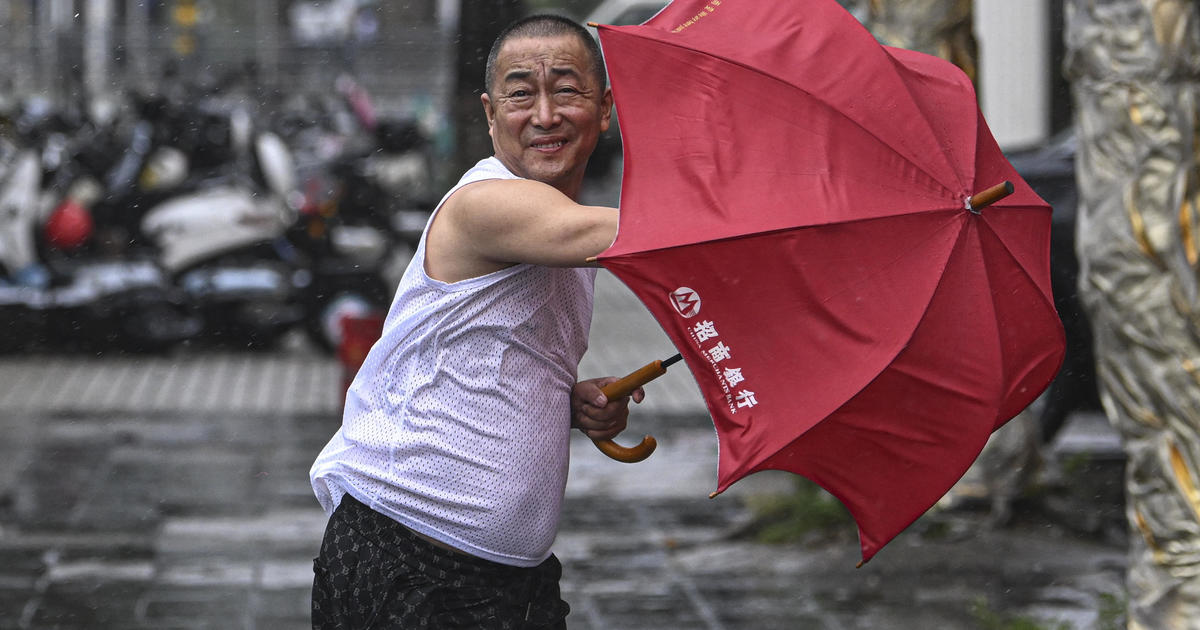Typhoon Yagi made landfall Saturday afternoon in northern Vietnam where authorities shuttered airports and evacuated the most vulnerable.
The typhoon, described by Vietnamese meteorological authorities as “one of the most powerful typhoons in the region over the past decade,” made its way to the Southeast Asian country after it left three people dead and nearly a hundred others injured in the Chinese province of Hainan.
Yagi landed at Vietnam’s coastal provinces of Quang Ninh and Haiphong with wind speeds of up to 149 kilometers per hour (92 miles per hour), state media reported. Before landing, strong winds felled a tree, killing a woman in the capital, Hanoi, local media said Saturday.
Quang Ninh is home to the UNESCO World Heritage site Ha Long Bay, known for its many towering limestone islands. Hundreds of cruises were canceled at the popular site before the typhoon landed, according to local media. Haiphong is an industrial hub, home to large factories, including EV maker VinFast and Apple supplier Pegatron.
The typhoon has also triggered power outages in large parts of Quang Ninh and Thai Binh provinces.
Earlier, the government issued several alerts, and those vulnerable to floods or landslides were evacuated. Four airports were shuttered, including in Hanoi, and Haiphong.
Authorities pruned trees in Hanoi to make them less susceptible to falling, but wind and rain knocked over several along with billboards in northern cities. Local media reported that many moored boats were swept out to sea.
Yagi struck the Chinese city of Wenchang in Hainan province on Friday afternoon with wind speeds of up to about 245 kph (152 mph) near its center. Authorities said the typhoon left three people dead and injured at least 95 others and that it affected over 1.2 million people as of noon Saturday, according to the local Global Times newspaper
Some 420,000 Hainan residents were relocated before the typhoon’s landfall. Another half a million people in Guangdong province were evacuated before Yagi made a second landfall in the province’s Xuwen County on Friday night.
Meanwhile, the meteorological observatory of the city of Haikou downgraded its typhoon signal from red to orange on Saturday, as it moved further away.
Before leaving Hong Kong, Yagi forced more than 270 people to seek refuge at temporary government shelters on Friday, and over 100 flights in the city were canceled due to the typhoon. Heavy rain and strong winds felled dozens of trees, and trading on the stock market, bank services and schools were halted.
Yagi was still a storm when it blew out of the northwestern Philippines into the South China Sea on Wednesday, leaving at least 20 people dead and 26 others missing mostly in landslides and widespread flooding and affecting more than 2.3 million people in northern and central provinces.
More than 82,200 people were displaced from their homes in Philippine provinces, and classes, work, inter-island ferry services and domestic flights were disrupted for days, including in the densely populated capital region, metropolitan Manila.
Warm waters in oceans power storms, and as they become warmer because of climate change, a U.N. climate change report warned that intense typhoons are becoming more common, especially in Southeast Asia.
In 2017, Typhoon Damrey slammed into Vietnam’s south-central coast, killing at least 15 people and leaving four others missing, officials said. In the worst-hit province of Khanh Hoa, 14 people were killed by collapsing houses or washed away by floods, the provincial disaster agency said in a statement.
The typhoon destroyed 302 homes and blew roofs off of more than 25,000 others, while sinking 112 transport and fishing boats, the agency said. The typhoon also caused extensive damage to the province’s rice fields and other crops.




